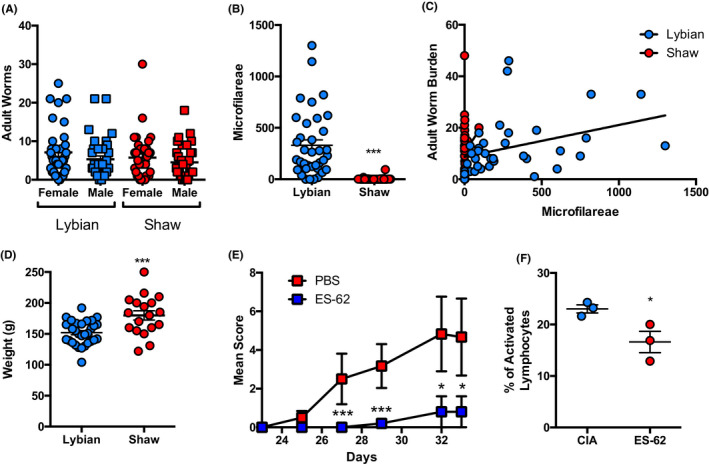FIGURE 1.

The Acanthocheilonema viteae life cycle cannot be completed in Meriones shawi. Age‐matched male M libycus and M shawi jirds were infected with 120 L3 A viteae larvae by sub‐cutaneous injection. Adult worms were dissected from jird pelts following exsanguination using CO2 and counted and sexed (A M libycus—n = 36; M shawi—n = 35). The presence of microfilariae (MF) was determined by blood sampling 5 µL and counting MF in each sample (B). Linear regression modelling was used to compare MF counts to adult worm burden, and the association of worm burden and MF count was confirmed in M libycus (P = .02) but not M shawi jirds (C). Infected M libycus (n = 31) and M shawi (n = 18) jirds were weighed (grams) after 3 mo of infection (D). ES‐62 purified from adult worms from M shawi jirds was tested for therapeutic properties in the mouse CIA model of arthritis with disease shown as mean arthritic score (ES‐62 n = 5; PBS n = 6; E). Draining lymph nodes from CIA and ES‐62‐treated CIA mice were analysed, and lymphocytes identified based on size and granularity (n = 3; F). Each data point represents an individual animal and is presented as mean ± SEM. Two‐tailed Student's t tests were used to analyse species differences, where * = P < .05 and *** = P < .001
